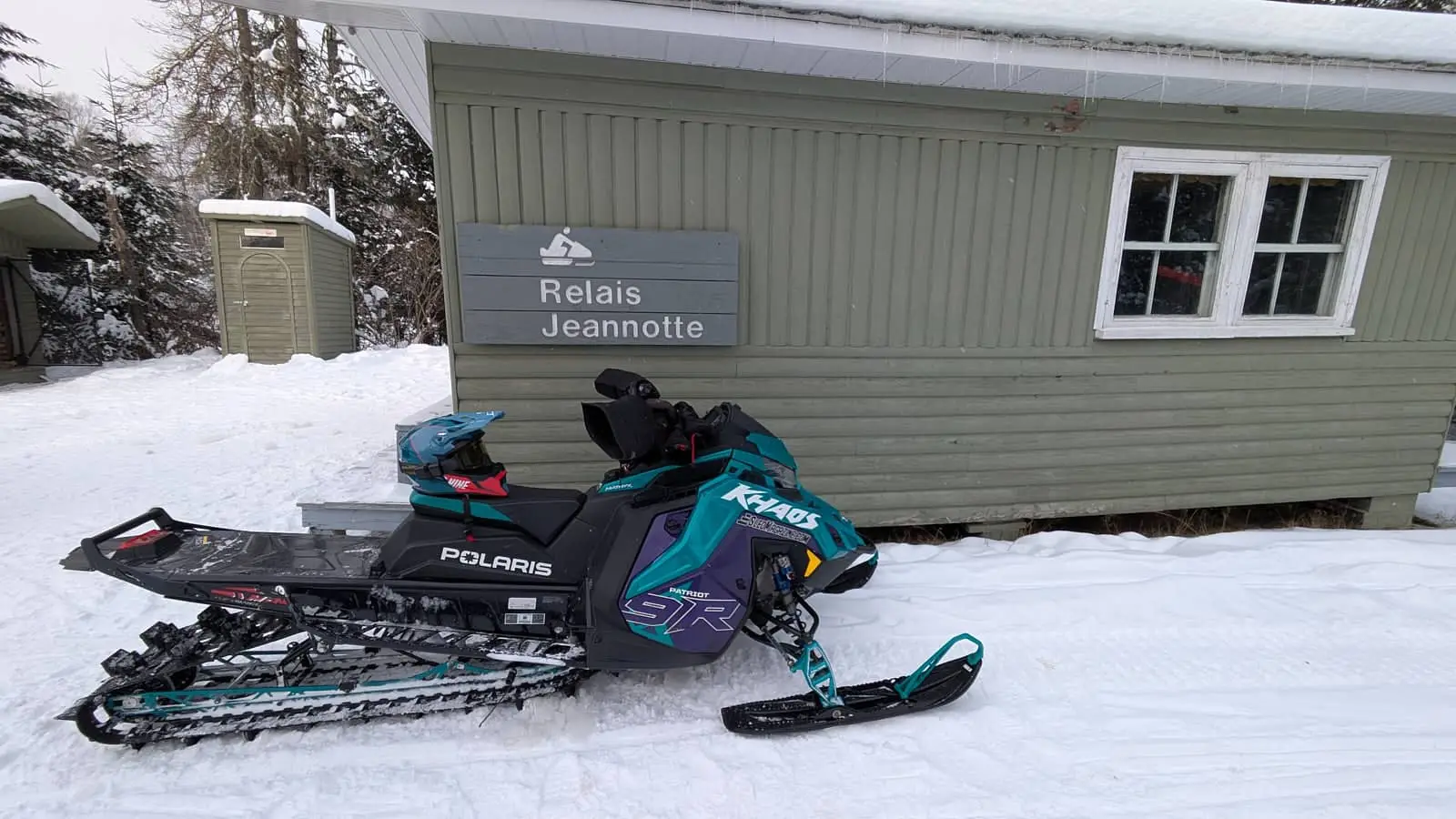Table of contents
ToggleFor a second year in a row, I have the pleasure of enjoying winter on a Polaris snowmobile. This season, I’m riding the 2024 Patriot 9R RMK Khaos Slash 155. Because of the lack of snow last winter, I wasn’t really able to push this beast to its limits. Also, this year, my sled went from a 146-in. track to a 155-in. one. I recently went on a trail ride to get familiar with this new machine. Since you’ve already heard about this snowmobile in an article by my colleague Yves Picard, I’ll be presenting it from another perspective: a mountain sled on the trail, and in numbers.
From 36 to 38 Inches Wide
Like most off-trail enthusiasts, before we can go wild in the deep powder, we first have to get there. Mountain sleds aren’t made for trail riding, but we don’t really have a choice. The Polaris Patriot 9R RMK Khaos Slash 155 has a 36 to 38-inch ski stance, which is narrow for trail riding. Touring snowmobiles, on the other hand, come with a wider stance —42.5 in. for the 2024 650 INDY Adventure, and 39 to 41 in. for the 2025 650 TITAN Adventure. This means a mountain sled tends to tip in tight turns. I have to work the brake lever to reduce speed before each corner to ride more safely.
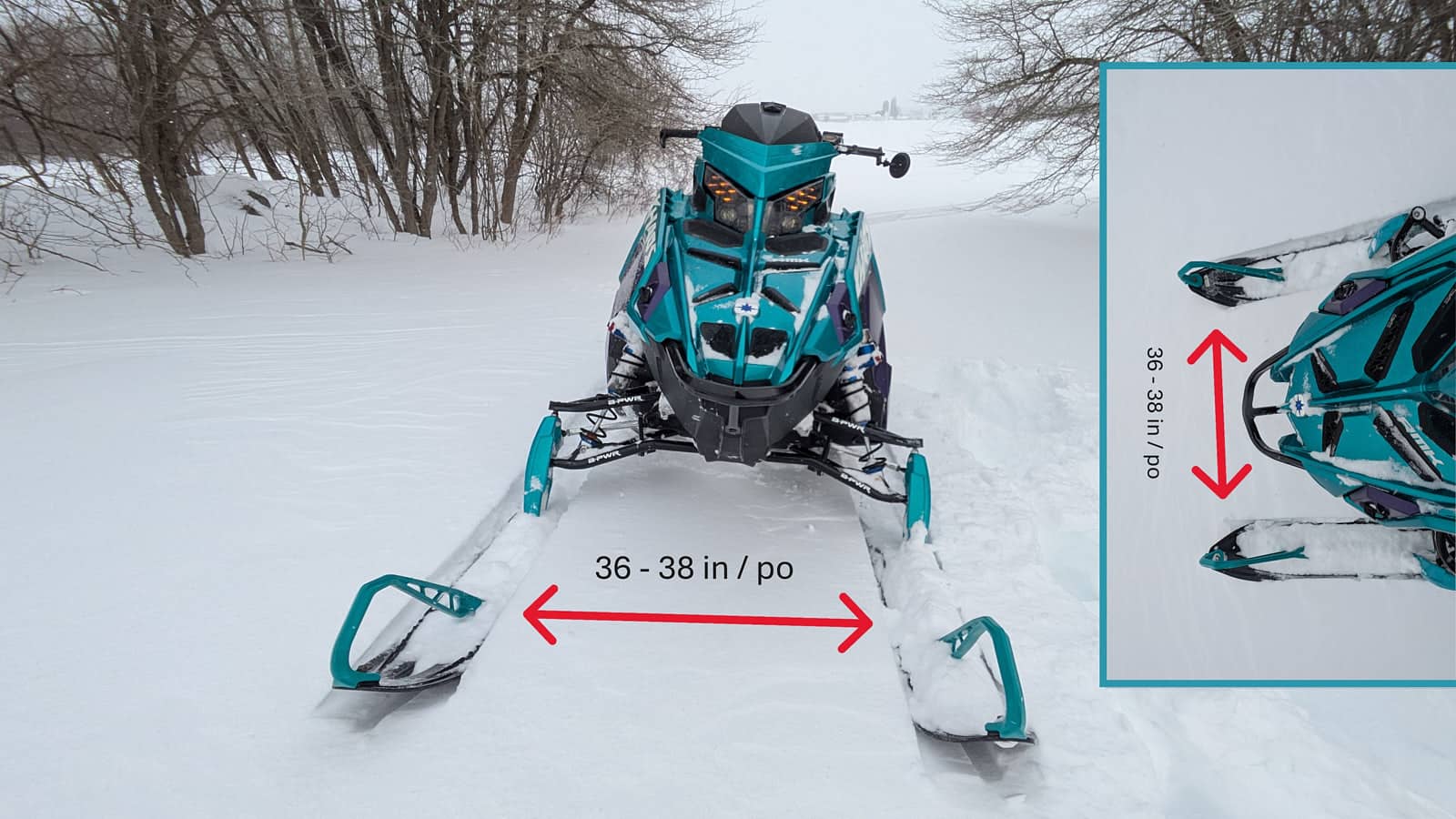
Series 9 Track (15 × 155 × 3.25) on Trails
What’s the purpose of a Series 9 (15 × 155 × 3.25 in.)? To eat a whole lot of snow! The Polaris Patriot 9R RMK Khaos Slash 155 comes equipped with the 155-in. Series 9 track with 3.25-in. lugs. This means incredible traction and explosive acceleration. I have to stay alert because a quick stab at the throttle sends this thing flying. Another detail that I pay attention to when driving on trails is sudden acceleration. I try to avoid it. I’m not a saint, but I know this track can dig holes in no time or leave behind impressive snow piles in an instant. Out of respect for others, I go easy on the throttle. One more thing to keep in mind: this track creates a lot of vibrations and is really loud on the trail.
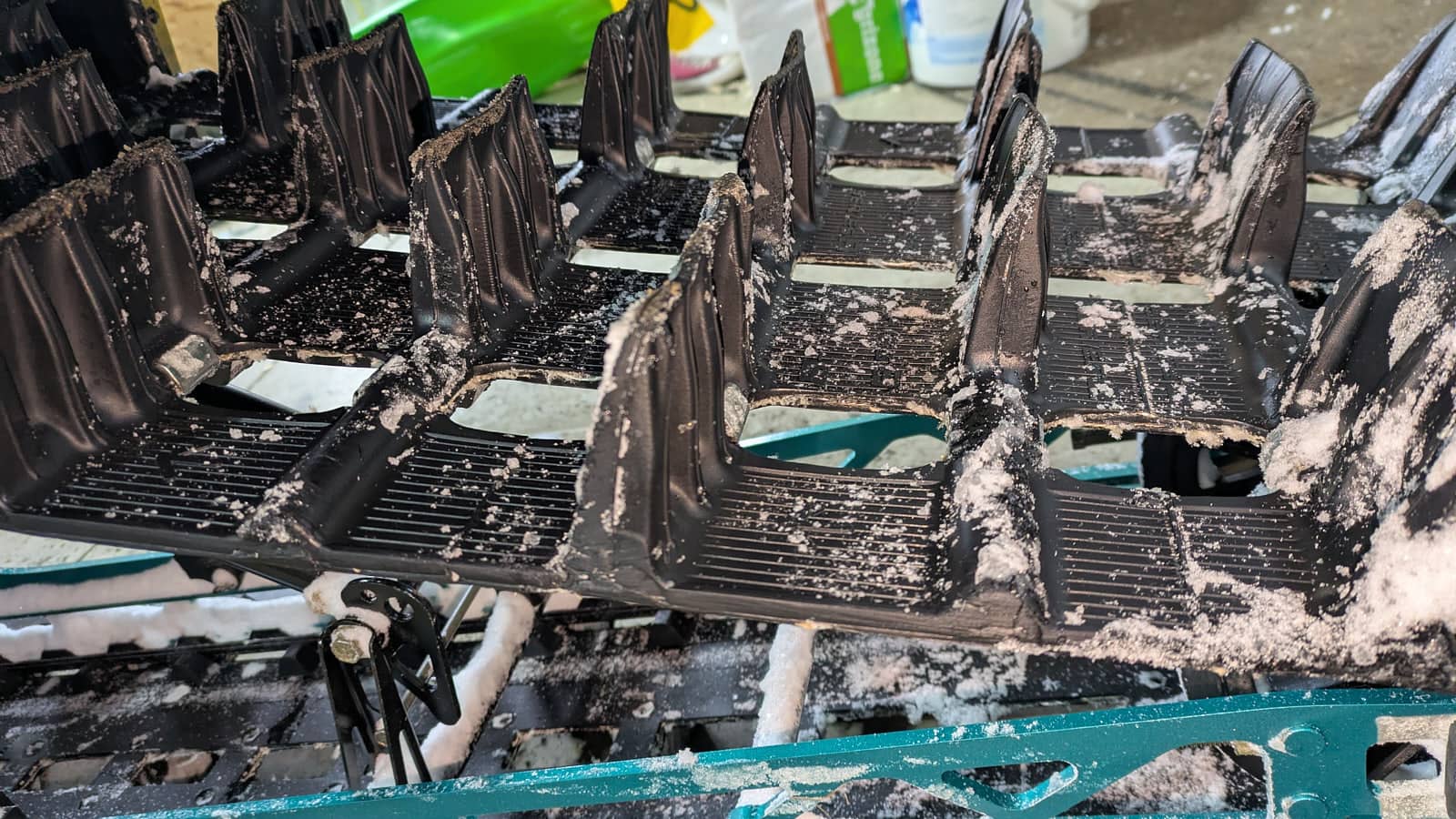
175 hp Patriot 9R Engine
You all know the 900 cc Patriot 9R engine and its estimated 175 hp! Polaris took it from its racing environment and made it available in production sleds. We’re talking about serious power and engineering—available to anyone who wants it. I mentioned engineering, so here are some interesting numbers:
- The 9R has an estimated 7% more horsepower than the Patriot 850.
- The 9R has up to 12% more torque than the Patriot 850.
- The 9R uses a lightweight crankshaft and flywheel, giving it quicker throttle response and faster revving.
- The 9R has CNC-machined exhaust ports, which boost power and throttle response.
- The 9R has ceramic-coated pistons for lightweight performance and long-term durability.
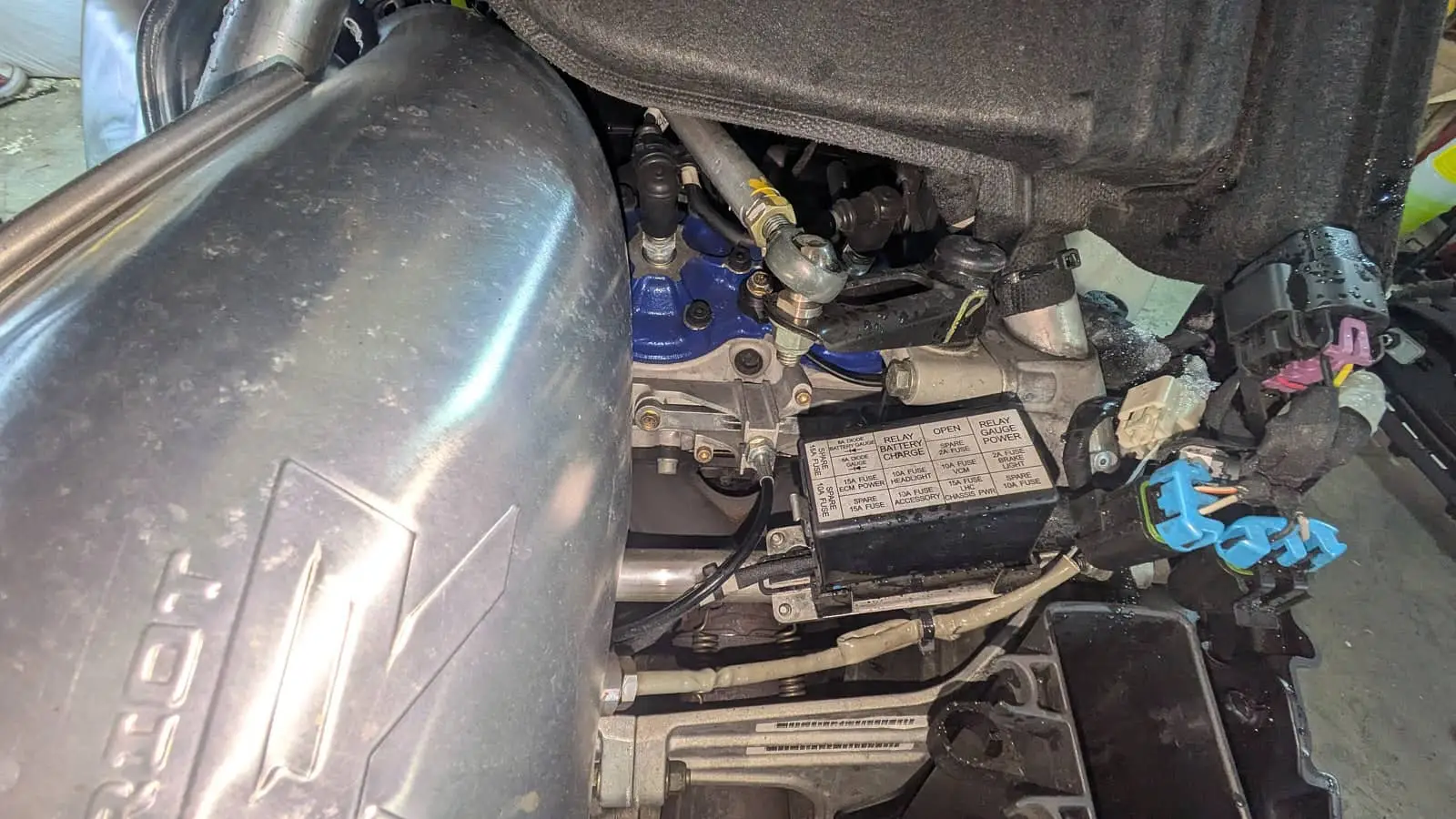
This sled with the Patriot 9R engine delivers thrills, adrenaline, and pure fun. And fuel consumption is still within a reasonable range. I actually compared it to the snowmobiles my buddies were riding:
- A 2022 Ski-Doo Tundra LT with the 2022 Rotax 600 EFI engine, and
- A 2024 Ski-Doo Expedition LE 154 with the 900 ACE engine.
To my surprise, over a 130 km ride, there was a fuel difference of about seven to eight litres between the three sleds. Needless to say, the Patriot 9R was the thirstiest of the bunch. But what bugged me the most was that my Patriot 9R needs 91-octane fuel, while the other two run on 87 octane. Premium fuel isn’t priced like regular, and my wallet felt the difference.
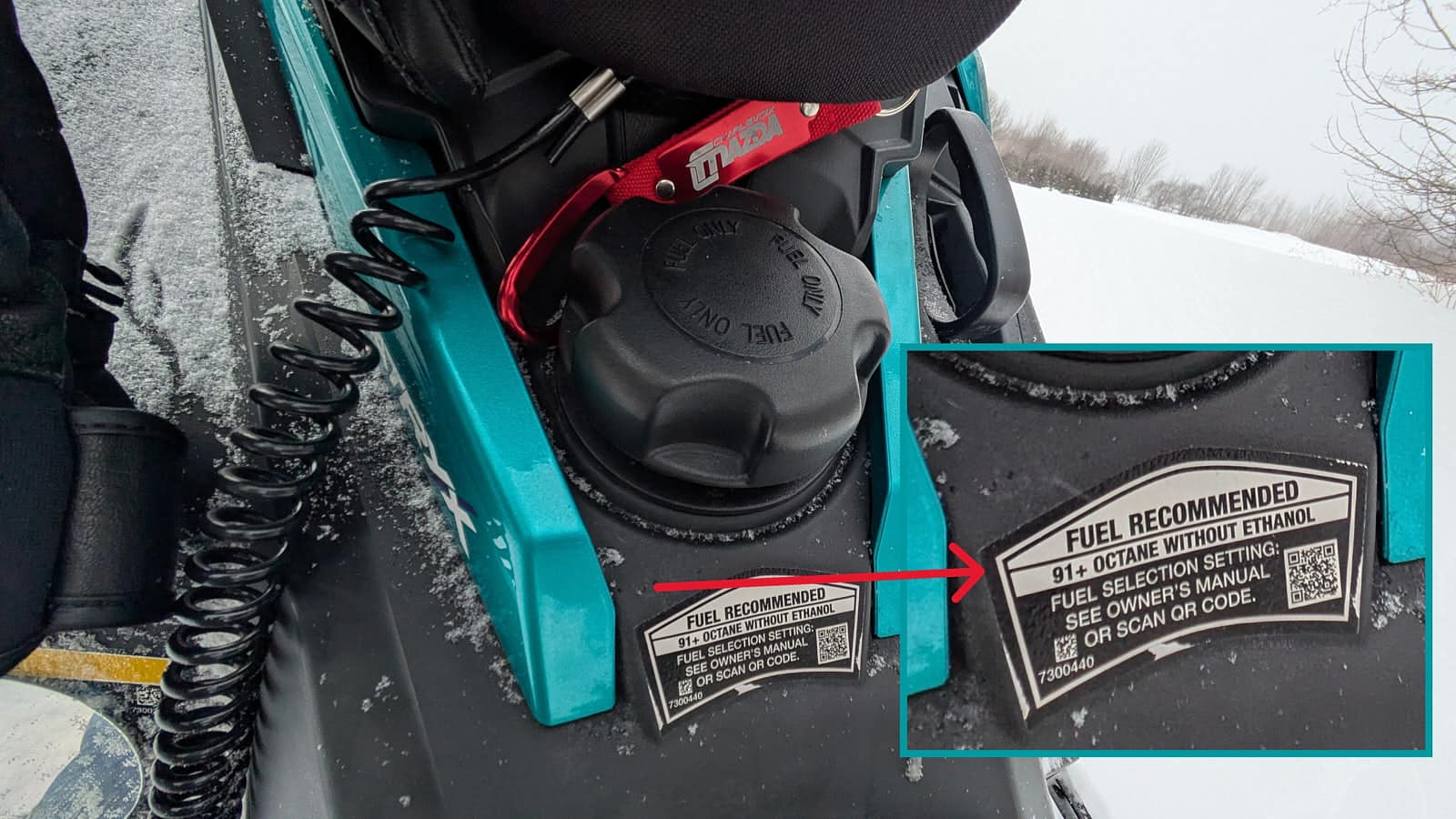
A -18 °C Ride Over 200 km
The Polaris Patriot 9R RMK Khaos Slash 155 is a legendary agility monster, able to lean and respond to every input from the rider. To make it this nimble and high-performing, Polaris had to make it as light as possible. The result is a light, manoeuvrable sled with these features:
- A short, almost laser-cut seat, giving the rider maximum freedom of movement and less weight.
- No windshield, to save weight and reduce breakage risk from tight branches or rollovers.
- No standard mirrors, the same idea as the missing windshield: less weight and less clutter.
- Very little storage—only a small space behind the console.
- Optional fuel can rack (over $600), so basically… no rack.
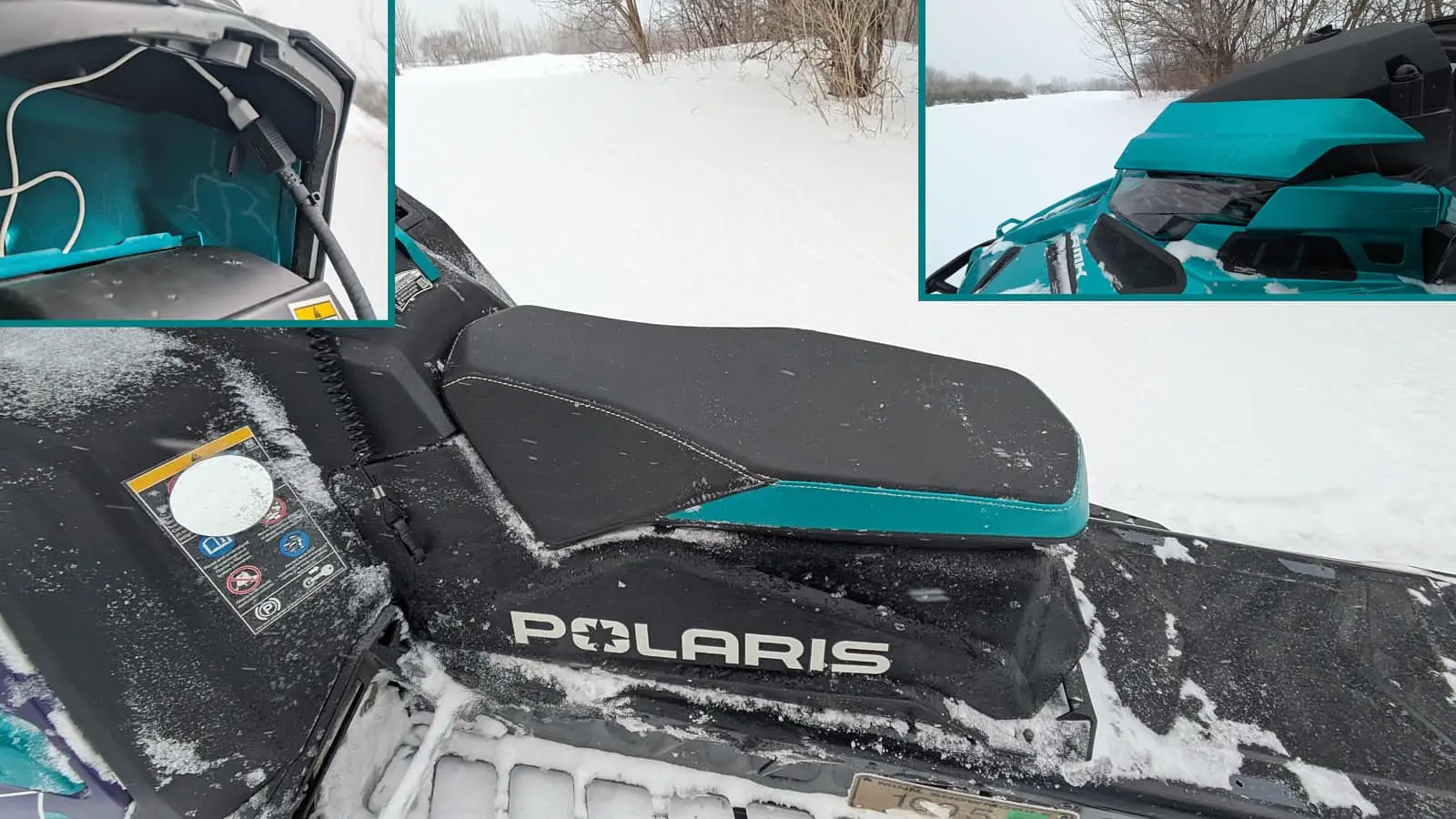
In the end, those missing features would’ve been handy on my ride. My butt was sore for much of the evening after the ride, thanks to the sporty, hard seat. At those speeds and in that cold, with no windshield, the windchill felt like -40 °C. My suit and 509 helmet did great—but not my gloves. At that speed and temperature, you’ll need serious expedition gloves or handlebar mitts (moufles), which I borrowed from a good Samaritan in our group. The hand warmers were cranked to max, and they were scorching the palms of my hands.
As for mirrors, since this is a mountain sled, it normally doesn’t have any. I added small handlebar mirrors to stay legal and to keep an eye on traffic behind me during the ride. But keep in mind, I had to install muffs, and that made the mirrors unusable. I had to make a personal choice—one that only my riding crew truly understands.
One last note about the fuel rack: the one from my Polaris Axys RMK 155 isn’t compatible with the tunnels on the Matryx chassis of the RMK Khaos Slash. That meant I didn’t have access to my extra 10 litres of gas… and no extra storage either. That took away a bit of my peace of mind during the trip.
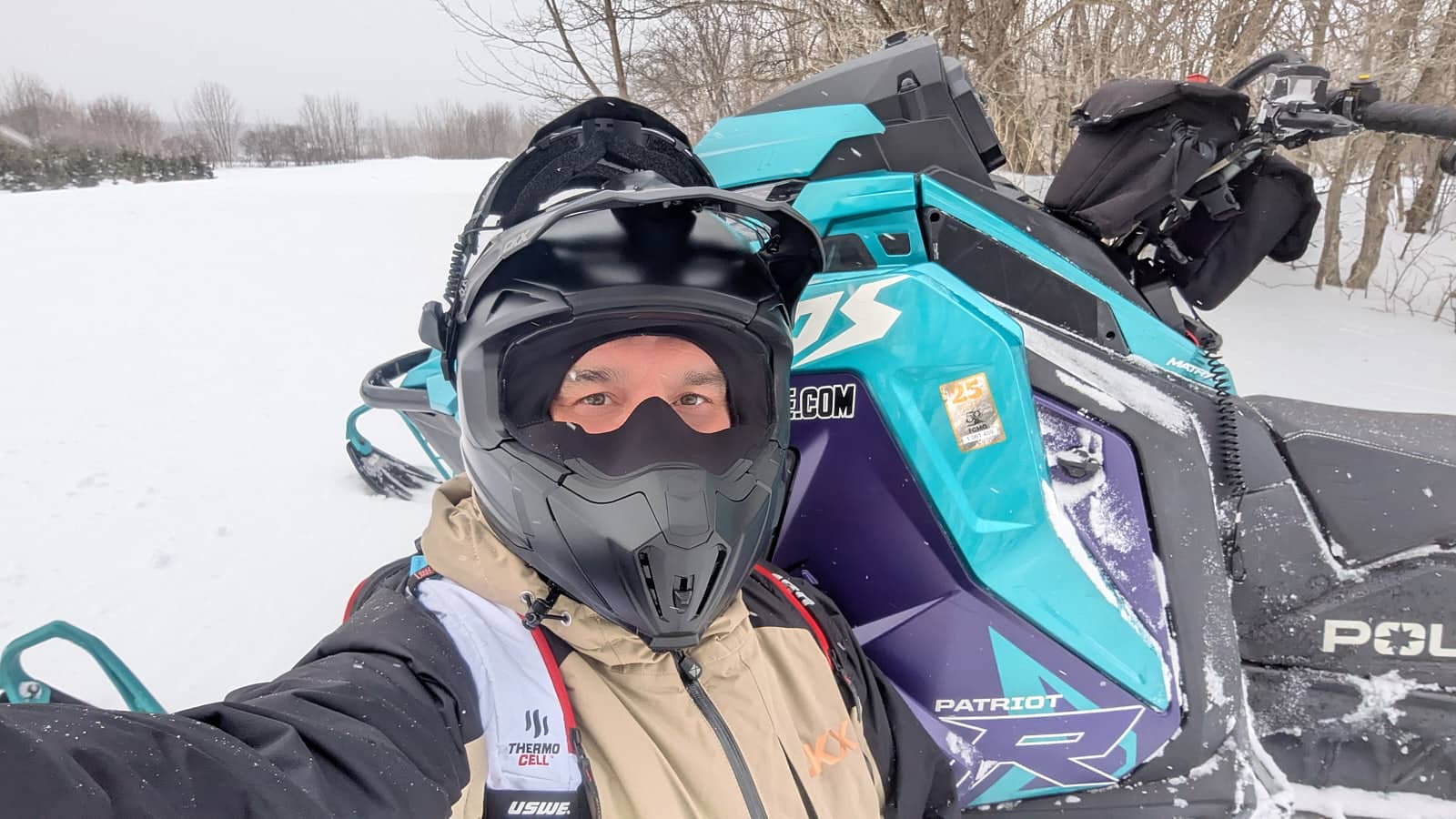
In Conclusion
I love my Polaris Patriot 9R RMK Khaos Slash 155, but there’s a moral to this crazy ride. I used a mountain sled on the trail. It’s built for agility and responsiveness, not long rides and comfort. I’m not the disorganized type—on the contrary, I always carry too much gear or accessories. It makes me feel safe and ready just in case. Don’t forget that snowmobiling is a winter activity—exposed to the elements—so it gets cold. Never ride alone and always plan ahead. I took on this ride to see how both the snowmobile and I would handle a use-case it wasn’t designed for. So go out, explore, breathe that fresh air—and you’ll have plenty of great stories to tell. Just so you know, I wasn’t alone, and we were equipped with GPS and communication gear during my testing.
Thanks to Polaris for their collaboration.

